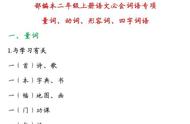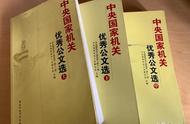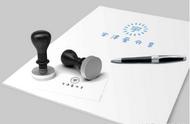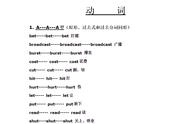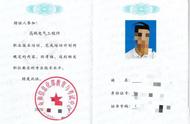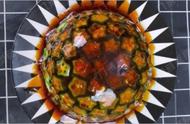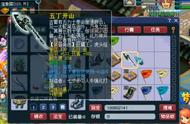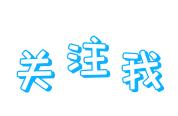一、动词的分类:

(1) 关于实义动词:
① 英语的实义动词又可分为及物动词和不及物动词两大类:
后面必须跟宾语意义才完整的叫及物动词;本身意义完整,后面不需跟宾语的叫不及物动词。
② 有些动词通常只作不及物动词。如:go, come, happen, lie, listen, rise, arrive, hall等。
有些动词通常用作及物动词。如:say, raise, lay, find, buy等。
③ 大多数动词可以兼作及物动词和不及物动词。如:study, sing等。
④ 有些动词作及物动词与作不及物动词时的意义有所不同。如:know, wash等。
⑤ 有些动词常和介词 、副词或其它词类一起构成固定词组,形成短语动词。如:listen, reply, wait, look.
(2) 关于连系动词:
① 连系动词用来连接主语和表语,连系动词后面常为形容词。
② 常见的连系动词有:be、become、look、feel、sound、smell、taste、seem、turn、grow、get、 go、fall、sit、stand、lie 等。
③ 有些连系动词来源于实义动词,意思也跟着变化:look(看→看起来)、feel(感觉、摸→感到)、 smell(闻、嗅→闻起来)、taste(尝→尝起来)、turn(翻转、转动→变得)、grow(生长→变得)、get(得到、到达→变得)、go(去→变得),所不同的是,作为实义动词时,后面不能跟形容词。
[注释]
become、get、go、be、grow、turn的用法区别:

如:I was caught in the rain and I became ill.(我淋雨感冒了)
He has got rich.(他变富了)
He will be a scientist in the future.(将来他将成为科学家)
My little brother has grown much taller in the past year.(在过去的一年里我的弟弟长得高多了)
The sandwich has gone bad.(那块三明治已经变坏)
Her face turned red after her mother criticized(批评) her.(妈妈批评了他以后他的脸变红了)
(3) 关于助动词:
①常见的助动词有:用于进行时和被动语态的be (am, is, are ,was, were, been, being ) ;用于完成时的have(has, had, having) ;用于将来时的shall (should) ; will (would)和用于一般时的do(does, did) .
②助动词必须同主语的人称和数一致,也就是说因主语人称、数的不同而采用不同的形式,其中有些助动词也可作情态动词。如:shall, will, should, would.
(4) 关于情态动词:
1. 常见的情态动词有:can (could) ,may (might), must ,shall (should), will (would), dare (dared) , need等,另外,have to、had better也当作情态动词使用。情态动词后面必须加动词的原形。
2. can表示体力、脑力方面的能力或客观的可能性。口语中, 在询问或说明一件事可不可以做时,常用“can”代替“may”。
情态动词“can”的过去式是“could”,否定式是“cannot”通常缩写成“can’t”,“could”的否定式是“could not”,通常缩写成“couldn’t”。
如:Can I help you?(要帮忙吗?)
He can swim.(他会游泳)
That can’t be Mr Li.(那不可能是李先生)
3. may表示允许、请求或可能性,用may提问时,肯定回答一般用Certainly或Yes,you may.;否定回答一般用can’t或mustn’t.
如:May I ask you a question?—Certainly.(可以问你一个问题吗?当然可以)
You may go now.(现在你可以走了
It may be in your pocket.(它可能在你的衣袋里)
4. must表示“必须”、“一定”的意思。表示“必须”时否定形式是mustn’t;表示“一定”时,否定形式是“can’t”
如:We must be very careful when we cross the road.(我们过马路时一定要非常小心)
It must be Jack.(那准是杰克)
I haven’t seen Kate today. She can’t be here.(我今天没有看到过凯特,她不可能在这里)
[注意] 用must(必须)进行提问时,肯定回答用must,否定回答用needn’t;
用must(一定)进行提问时,肯定回答仍用must,但是否定回答用can’t.
如:Must we clean the room before we leave? –Yes, you must.或No, you needn’t.
(我们走之前必须要打扫房间吗?是的,必须打扫。/ 不,不需要。)
Must she be in the room? –Yes, she must.或No, she can’t.
(她一定在房间里吗?是的,一定。/ 不,不可能在。)
5. “have to”表示“不得不”、“必须”。
We’ll have to leave now for it is very late at night.
have to的疑问形式是:助动词 … have to,
否定形式是:助动词 not have to或者用needn’t.
如:Do you have to stay until 8 o’clock?(你得呆到8点钟吗?)
You don’t have to do so.(=You needn’t do so.)(你不用这么做)
6. shall在问句中,可表示征求对方意见,与第一人称连用;在陈述句的第二、三人称的主语后或表示“命令”、“警告”、“允许”等。
如:Shall we go to the zoo this weekend?(我们这个周末去动物园好吗?
He shall bring his own book next time.(他下次必须带自己的书来)
7 should可表示“劝告”、“建议”、“惊奇”等意思。
We should speak to old people politely.(我们应该礼貌地对老人讲话)
8. will表示“意愿”、“决心”等意思,一般与第二人称连用。
如:Will you please close the door for me?(请你替我把门关上好吗?)
I will teach you a lesson.(我要教训你一顿)
9. would表示过去的“意愿”、“决心”等。
He would sit near the fire every time he returned home.(每次他回到家中总要坐在火炉边)
would也可以表示现在的情况,表达说话人向对方提出的要求,语气比“will”婉转、客气。在日常会话中,“我想要…”通常用“I would like to”或“I should(I’d) like to”来表示。
如:Would you like to have a rest at the moment?(你现在想要休息一下吗?)
would还可以表示过去经常发生的事情。
如:Every year parents would tell their children about the boy who would save his people.
(每一年父母们总是向孩子们讲述这个将会拯救他的人民的男孩的事)
10. need表示“需要”,用于疑问句或否定句。“need”作实义动词时,在肯定、否定、疑问句中都可以用。
如:He needn’t do it in such a hurry.(他不需要如此匆忙地做这件事)
He needs some help.(他需要一些帮助)
He doesn’t need to bring his football socks then.(那么他就无须带上足球袜了)
11. dare是“敢”的意思,用法几乎与“need”完全相同,即在疑问句和否定句中,可以作情态动词,后面用不带“to”的动词不定式。在肯定句中和实义动词一样,后面的动词不定式要带“to”。
How dare you say I am a fool?(你竟敢说我是个傻瓜?)
He didn’t dare to touch the red button.(他不敢触碰那个红色的按钮)
12. ‘d better (do)(“最好是”)一般也当作情态动词使用,否定式是:’d better not (do).
如:You’d better sit here and say nothing.(你最好坐在这儿不讲话)
You’d better not speak because he is sleeping.(你最好不要讲话因为他正在睡觉)


